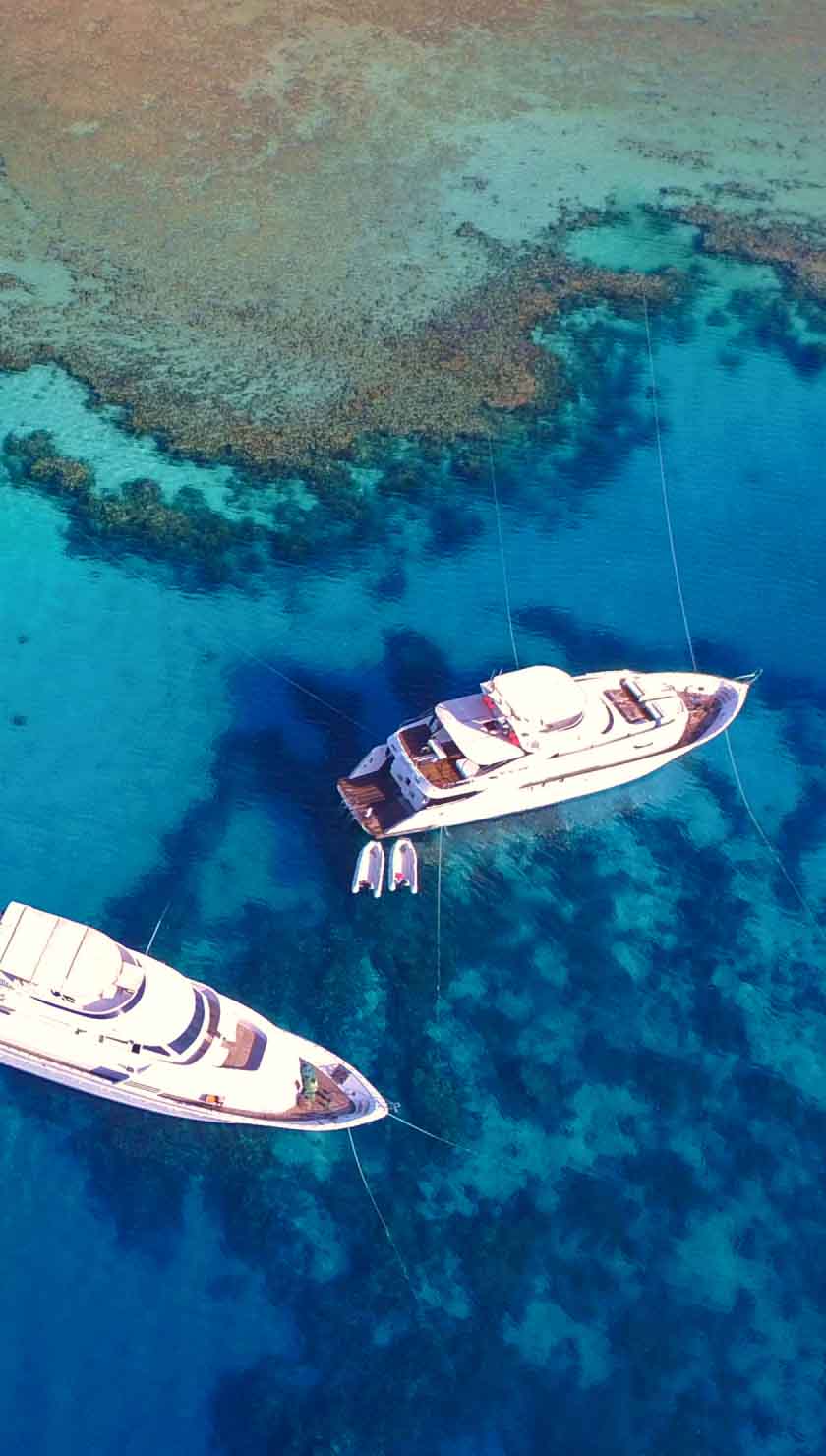Liveaboard Diving in Andaman Sea
What to Expect on an Andaman Sea Liveaboard
Liveaboards to the Andaman Sea take divers to one of the top dive destinations in the world. With a tropical island backdrop, the Andaman Sea offers an impressive underwater topography mixed with diverse marine life, claiming some of the best diving in Thailand and worldwide. The unique diversity of the dive sites (suitable for different levels) on an Andaman Sea liveaboard promises vastly different diving experiences. Liveaboard.com offers a wide range of liveaboards in the Andaman Sea, Thailand, some with unique attributes tailored to your needs.
Andaman Sea Underwater
Divers on an Andaman Sea liveaboard can expect a range of topography, from soft corals and sea fans to hard corals, deep drop-offs, massive underwater boulders, swim-throughs, caves, and more. Dives with manta rays, eagle rays, sea turtles, sharks, pipefish, barracuda, catfish, and schools of reef fish are standard practice, with the occasional presence of the graceful whale shark in season. Water conditions present mild to strong currents, good visibility, and warm temperatures.
Dive Sites/Areas of the Andaman Sea
Andaman Sea Liveaboard itineraries may vary, but the most popular dive sites/areas include:
KOH LANTA is rated as one of the best dive areas in Thailand, hosting two popular dive sites: Hin Daeng & Hin Muang. Renowned for their beautiful pink and purple soft corals giving them their name, the topography is simple yet intricate, with Thailand's biggest vertical wall, outcrops, ledges, small inlets, canyon-like formations, and rocky bays. Adding to the terrain is the incredible marine life of whale sharks, manta rays, and grey reef sharks, which are the creme de la creme. Visibility is often up to 25m unless the waters are plankton-rich.
SURIN ISLANDS offer regular sightings of cruising white tip reef sharks, barracuda, batfish, ghost pipefish, bumphead parrotfish, napoleon wrasse, octopus, mantis shrimp, blue-spotted jawfish and the rarer sightings of seahorses, frogfish, manta rays and whale shark. Depths range from 5 to 30 meters with warm, clear waters; the coral formations in these waters act as a good barrier, with fields of staghorn corals dominating the shallows. You may see the occasional passing eagle rays in the blue.
SIMILAN ISLANDS are possibly the most popular dive destination in Thailand. White sandy beaches, granite boulders above and below water, and vibrant reefs all create an exceptional diving landscape topped with a plethora of marine life. A variety of dive sites home to over 500 species, to name a few: leopard sharks, guitar rays, whitetip sharks, blue-spotted stingrays, clown triggerfish, rabbitfish, scorpionfish, snappers, emperor fish, giant trevally, and angelfish. Macro lovers will enjoy finding tiny ghost pipefish, mantis shrimps, porcelain crabs, cleaner shrimp, and more.
RICHELIEU ROCK, to the southeast of the Surin Islands, is renowned for whale shark sightings and other pelagics like the Manta Ray, barracuda, giant trevallies, and dogtooth tuna. This site also provides a plethora of critters, including porcelain crabs, tiger tail sea horses, pipefish, harlequin shrimp, and nudibranchs.
KOH TACHAI is located northwest of Similan Islands National Park. This site is tailored to the more advanced diver, with drop-offs up to 70m, swim-throughs, and strong currents. In February and April, whale sharks and manta rays feed on plankton in the waters. Common sightings include leopard sharks, Napoleon wrasse, Hawksbill turtles, groups of batfish, banded sea snakes, barracudas, trevallies, and sharks.
KOH BON, south of Surin Island, is known as the perforated island, classified as a deep dive due to a fantastic wall dive that goes down to 42m on the southwest side. Also frequented by many leopard sharks, the usual suspects such as the morays and white tip reef sharks cohabit these waters. Also a popular cave diving spot, this should only be attempted with the right certifications.
Top Tips for Divers
There are many dive areas in the Andaman Sea, so you can dive in different locations depending on the time of year. Liveaboard trips to the more remote areas in the Andaman Sea, such as the Similans, Richelieu Rock, and Hin Daeng, only run from November through to May due to weather conditions making these inaccessible. The best time to dive in these sites is the end of February when an increase in currents attracts larger marine creatures like whale sharks and manta rays. Visibility ranges from 25-40m during this period, and water temperatures range between 28-31C. Some dive areas are tailored for the more advanced diver, so it may be better to check with your Liveaboard cruise what dive experience you need before deciding on your itinerary. It is possible to rent equipment on most cruises, however, as most divers know, it is always recommended to have your own gear. If you bring your own equipment, bring a DIN adapter, as Thailand uses the standard yoke system. You may not need more than a 3mm neoprene shorty or full body wetsuit bearing in mind after 3 or more dives a day, you may get cold.
Most dive sites offer fantastic opportunities for avid underwater photographers, so remember to bring your camera and battery charger! Some Liveaboards cater to specific languages, so it may be worth checking before booking if you are more comfortable in a language other than English.
The currency is the Thai Baht, but it is recommended that you also take US dollars. The electricity voltage runs at 220 volts, and it is recommended that you bring a universal adapter.
The nearest recompression chamber is in Phuket.
Getting to the Andaman Sea
Thailand liveaboards that cruise the Andaman Sea may depart from different ports, usually Chalong Pier in Phuket or Thap Lamu Pier in Khao Lak, Phang-Nga Province. Transfers to the port are provided from Phuket International Airport or your hotel. Please note that some liveaboards may even depart from one port and return to another, i.e., depart from Phuket and return to Khao Lak. Some International flights fly directly to Phuket, or you can get a connecting flight from Bangkok. You can reach Khao Lak overland from Phuket.











